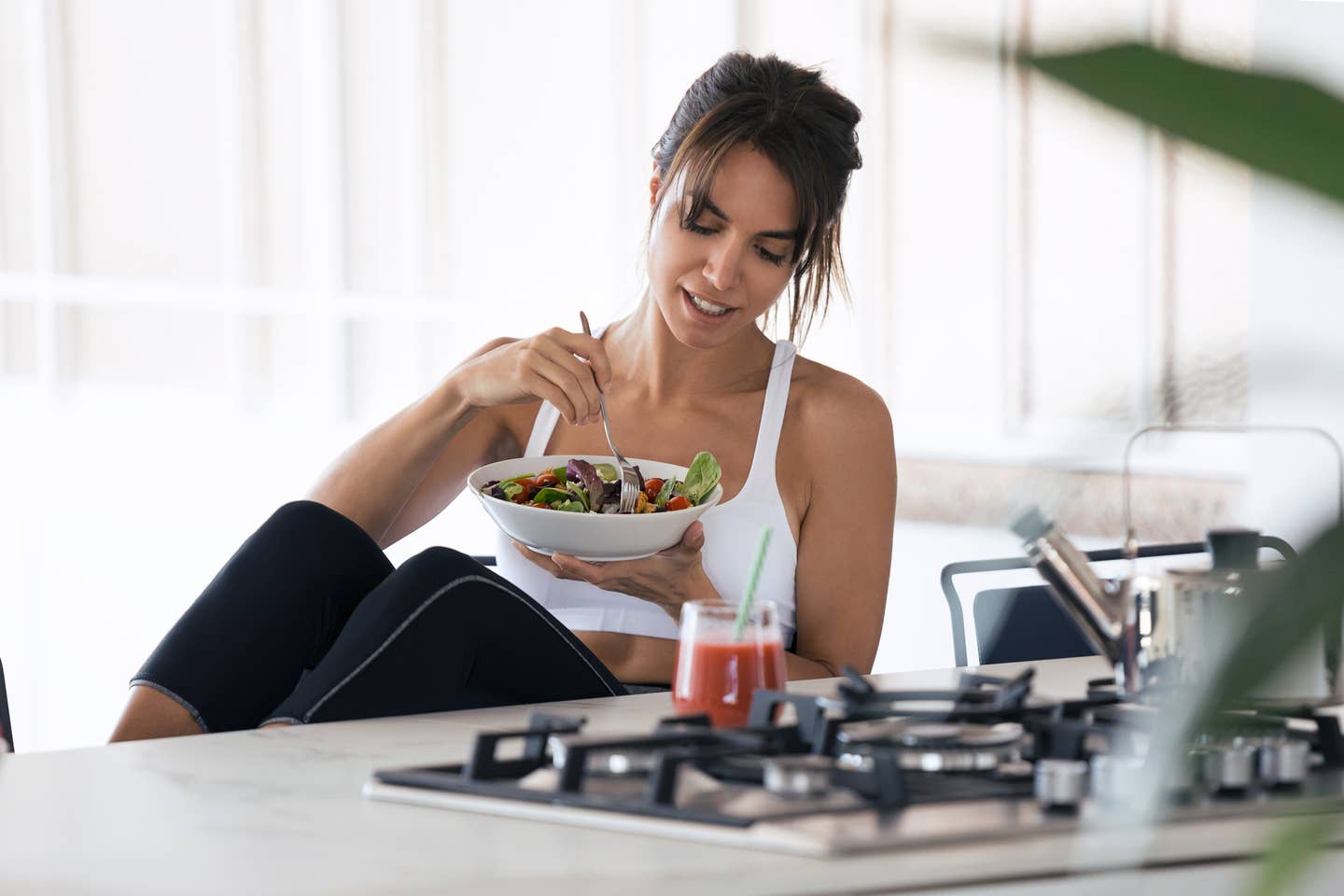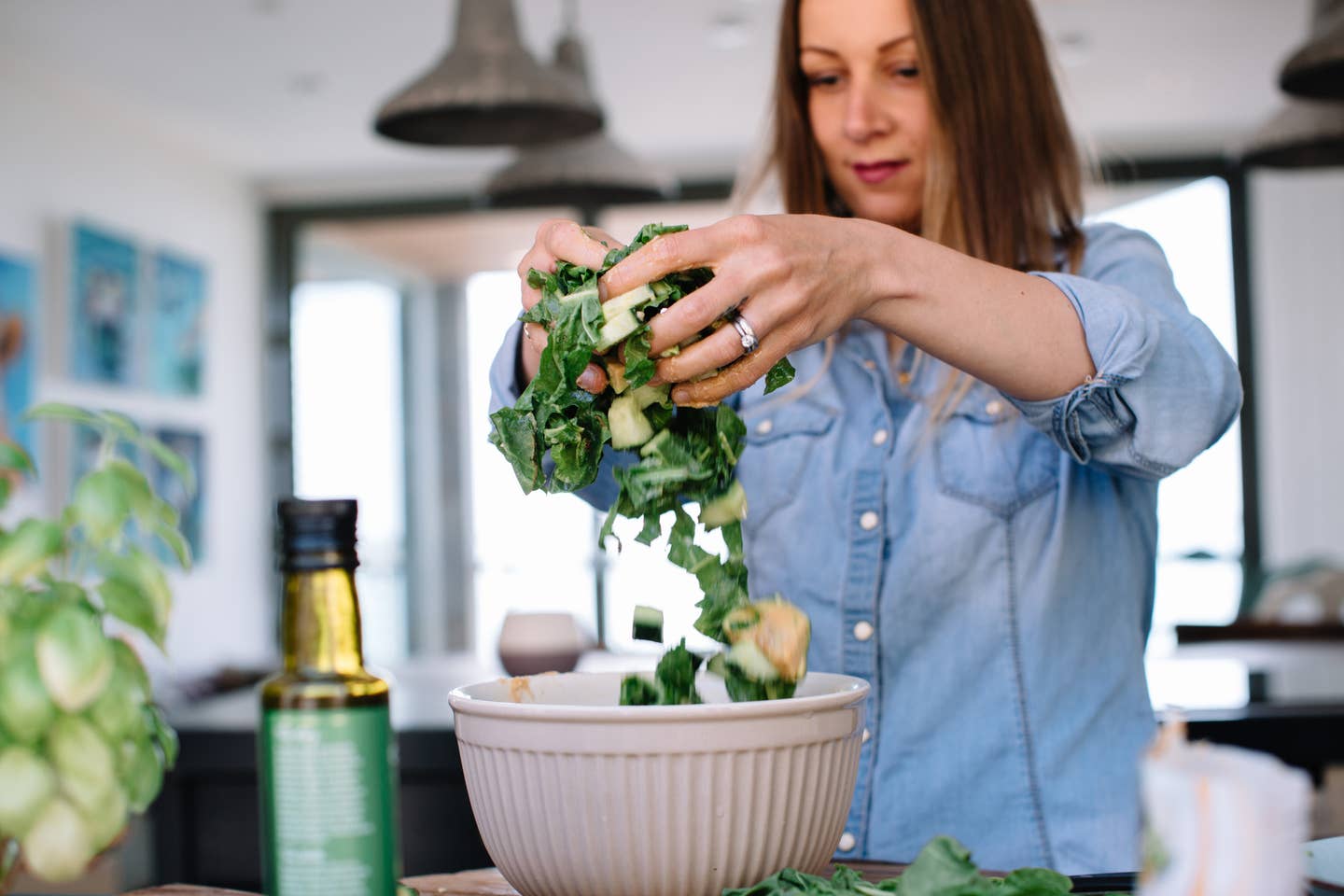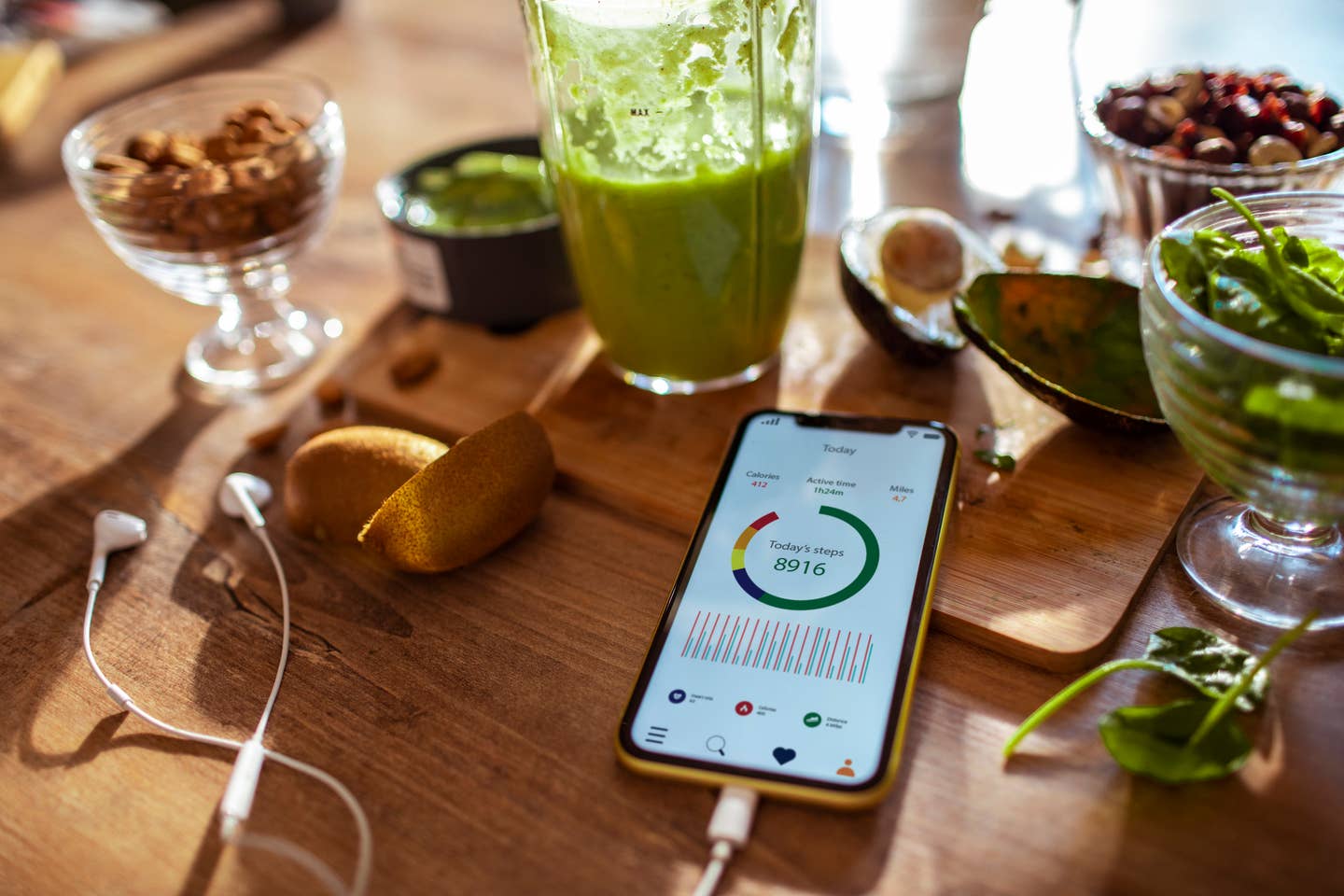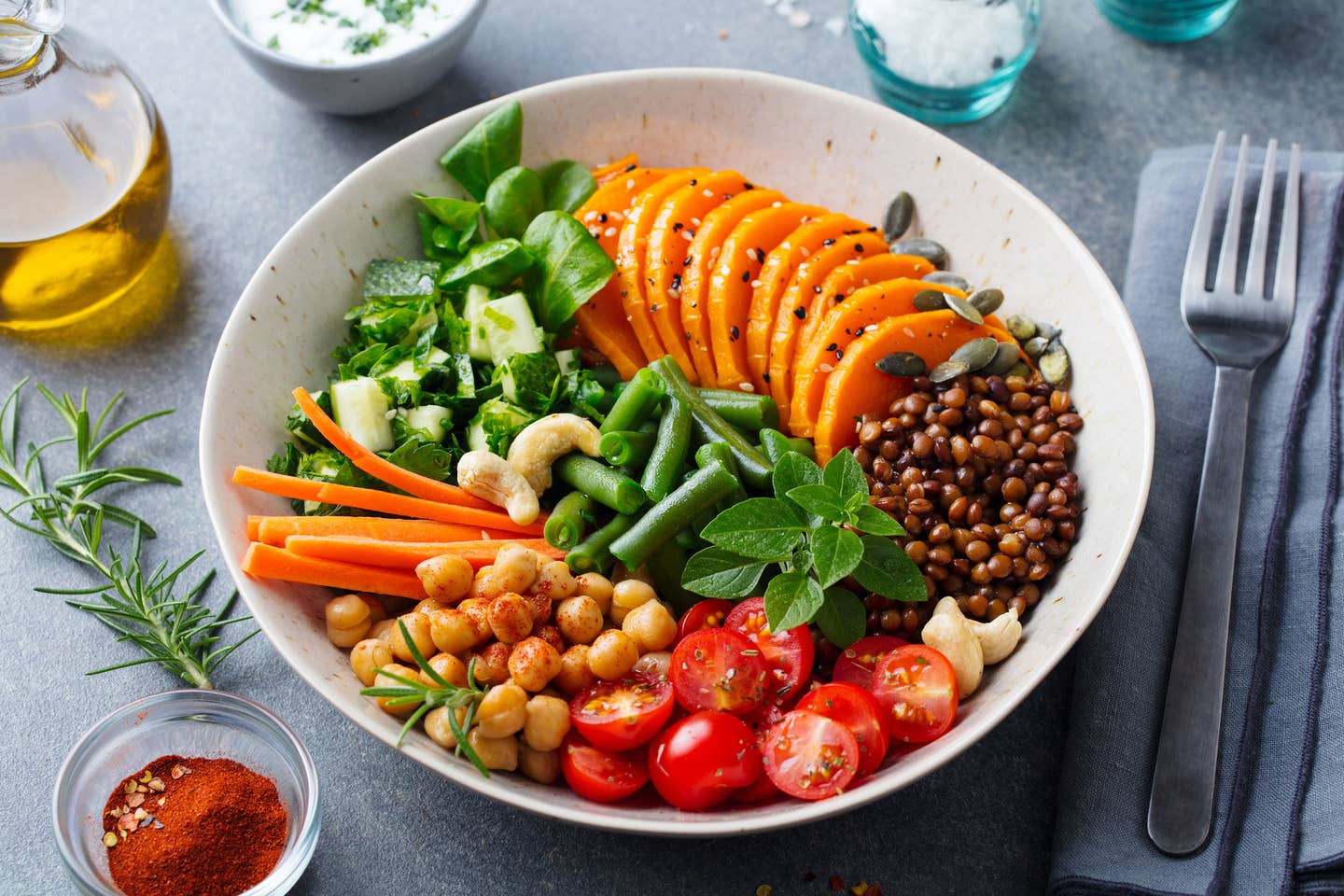
To Lose Weight, Stop Counting Calories and Do This Instead, A Study Says
For years we have been told that eating small meals throughout the day is the key to healthy weight loss. The opposite may actually be true, studies now tell us. Eating two large meals a day is better than six small ones, to burn more calories, keep blood sugar low and lose weight quickly. Even if you eat the exact same amount of calories in the two meals versus the frequent smaller ones, you will lose more weight and lower your blood sugar with the less frequent eating habit, the research says. The key appears to be allowing time between meals and eating according to your body's biological clock, not the times designated by others.
The latest trend of intermittent fasting (IF), where you don't eat for a window of 14 to 16 hours a day, allowing your blood sugar to flatten and your body to use fat stores as fuel, is so popular in large part because it's how we often eat anyway. IF doesn't take any extra calorie counting or net-carb calculating. If you eat an early dinner and late breakfast you are likely not eating for 14 hours. Stretch that a little further and you get to 16 hours.
Before IF became popular, when we were told to eat breakfast, by health magazines and other experts, many of us who are not generally hungry when we wake up (or until later in the morning) felt that we had to force ourselves to eat something, and turned to sweet cereals, sugar and butter-laden pastries, doughy bagels with cream cheese, or other high-carb, low nutrient breakfasts that would set us up for weight gain.
Two Meals a Day Spaced Out is Optimal for Weight Loss, Studies find
While more frequent meals were believed to lower the risk of disease, there is now conflicting evidence that shows the low meal frequency (one or two meals a day) has been found to be most effective in losing weight, in a recent study. The key is to take into account the period of fasting between the two meals. "The physiological underpinning of these interconnected variables may be through internal circadian clocks," the authors wrote, "and food consumption that is asynchronous with natural circadian rhythms may exert adverse health effects and increase disease risk." Which is a fancy way of saying: Listen to your own hunger cues and eat when you want to, not at a pre-ordained time for breakfast, lunch, and dinner.
The myth was that eating breakfast and then a series of smaller meals throughout the day would allow us to eat fewer calories overall, but that rarely happens when one starts the day with a carb-rich calorie bomb like a donut. This sugary breakfast habit then sends our blood sugar skyrocketing and plummeting, setting us up for a day of rollercoaster hunger and lagging energy that was worse than if they had not eaten anything at all until a little later in the middle of the morning when their natural hunger cues would kick in.
“If your morning meal consists of foods high in sugar with little to no fiber or protein, the up and down blood sugar triggers your body into thinking it needs more fuel,” comments registered dietitian, Lauren Armstrong. “Research has indicated a big dip in blood sugar can lead to hundred more calories eaten throughout the day.”
When you look at the evolutionary reasons for this, we likely were born to get up and forage, hunt or find our food, pick the berries and fruit, cook the small meat and eat at around noon. The body is built to easily withstand a morning of no sustenance and can make it much longer to our next meal, burning calories along the way.
Intuitive eating calls for eating when hungry, and not when you feel neutral or full.
In the study that looked at the difference in weight loss between two large meals a day versus six smaller ones, researchers asked 54 patients with type 2 diabetes (both men and women), between the ages of 30 and 70, with a BMI of between 27 and 50 and an HbA1c 6-11.8 percent to follow two different diets for 12 weeks (27 in each group). Each diet involved the same number of calories and carbs and the same macronutrient content– but one diet was spread over six meals a day and the other diet involved eating two sittings a day, for essentially what was breakfast and lunch.
Both groups lost weight but the dieters in the two meals a day lost more weight and lowered every major health marker to end up significantly healthier than those who ate essentially all day long. The findings: Eating only two meals a day reduced body weight, cholesterol levels, fasting blood sugar, and every other important health marker, more than the same caloric restriction split into six meals. These results suggest that eating two meals a day is more effective in weight loss than spreading your calories into more meals throughout the day.
Here's where following your natural diet urges makes sense. Instead of thinking that you need to eat breakfast and lunch (and skip dinner), listen to your body and eat when you're hungry. For most of us, that means mid-morning, like at 11 or 11:30 am and have an early lunch-style meal that is savory, not sweet. Eating a sweet breakfast sends blood sugar soaring and insulin crops up to tell your body to cart off unused blood sugar to be stored as fat. In many countries the first meal is protein and vegetables, nuts and fruit, whole grains and seeds, so add leftover salad to your first meal of the day, and think in terms of helping your body burn fuel without overwhelming it with added sugars.
“Adding protein, healthy fats, and fiber into your meals helps to stabilize blood sugar because they digest much slower compared to high sugar foods,” says Armstrong. “You’ll also feel full for a longer period of time and will avoid any early afternoon energy crashes.”
The second meal may be earlier than what people call dinner. It may be a sunset meal or a twilight snack. Most of us dive into the chips and dips before dinner because our natural body clock tells us that we should eat at 5 or 6 pm and then by the time we go to bed we have had ample time to digest. When dinner is late, like 8 or 9 pm that can confuse our natural diet cues and we eat to be social, not because that's when we are actually hungry.
Bottom Line: To be healthy, lose weight, and not overeat, try two meals a day and shift them to when you are hungry, not when you first wake up in the morning. If our natural hunger clock is to be trusted and listened to, then we may need new names for meals. Instead of breakfast, lunch, and dinner, perhaps we need a mid-morning meal and an evening meal. Leave the rest to your natural diet clock, and trust your body. Research is showing us we know how to eat if we just listen to ourselves.
The Top 20 Veggies with the Most Protein
1. Soy Beans
Soybeans are a legume but they are such a great source of protein that we had to lead the veggie list with it. There is more protein in just one ounce of soybeans than a cup of sliced avocado! 1 cup equals Protein - 28.6g Calories - 298 Carbs - 17.1g Fiber - 10.3g Calcium - 175mg
2. Peas
If the pod, that peas are grown in, is split down the middle, that is an indicator they are ripe. Seeds inside the pod vary and can be green, white or yellow. 1 cup equals Protein - 8.6g Calories - 134 Carbs - 25g Fiber - 8.8g Calcium - 43.2 mg
3. Corn
Fresh corn is a great source of energy for those who like to stay active. Protein isn't all that corn has to offer. Corn provides the body with potassium and B vitamins. 1 cup equals Protein - 5.4g Calories - 177 Carbs - 123g Fiber - 4.6g Calcium - 4.9mg
4. Artichoke Hearts
Artichokes are part of the sunflower family. The fiber in artichoke hearts is great for supporting digestion. 1 cup equals Protein - 4.8g Calories - 89 Carbs - 20g Fiber - 14.4g Calcium - 35.2mg
5. Asparagus
If not properly stored, Asparagus tends to go bad quickly, To elongate freshness, put damp paper towels around the stems, or place the entire asparagus bunch in a cup of water (like flowers) to maintain freshness longer. 1 cup equals Protein - 4.4g Calories - 39.6 Carbs - 7.4g Fiber - 3.6g Calcium - 41.4mg
6. Brussel Sprouts
Brussel sprouts have more Vitamin C than an orange. If your Brussel sprouts have a rancid odor that is an indicator you overcooked them. The smell occurs because the sprouts are composed of a great amount of sulforaphane. 1 cup equals Protein - 4g Calories - 56.2 Carbs - 40g Fiber - 4g Calcium - 56.2mg
7. Broccoli
If you are trying to lose weight broccoli is a great addition to your diet because it consists of 90 water and is also high in fiber. 1 cup (chopped) equals Protein - 3.8g Calories - 54.6Carbs - 11.2g Fiber - 5.2g Calcium - 62.4mg
8. Mustard Greens
Mustard greens provide the body with tons of Vitamin A, Vitamin C, Vitamin K and fiber. Adding steamed mustard greens into your diet has been known to lower cholesterol and reduce inflammation. 1 cup equals Protein - 3.2 g Calories - 21 Carbs - 2.9g Fiber - 2.8g Calcium - 104mg
9. Avocado
Avocado is commonly mistaken as a vegetable but it is technically a fruit. This fruit had to be included in our veggie list because it isn't just tasty but super nutritious. Avocados are packed with protein but they are a great source of potassium and fiber. Avocados are a great addition to any salad, sandwich and even smoothie!
10. Onions
Onions are an unappreciated food hero since they provide 20 percent of your daily Vitamin C and deliver an abundance of antioxidants that can reduce inflammation. 1 cup (chopped) equals Protein - 2.9g Calories - 92.4 Carbs - 21.3g Fiber - 2.9g Calcium - 46.2mg
11. Beets
The entire beetroot is edible including the leaves which contain loads of vitamin A, calcium, iron and potassium. Beetroot is high in sugar but is considered one of the most nutritious veggies used in salads and soups. 1 cup equals Protein - 2.8 g Calories - 74.8 Carbs - 17g Fiber - 3.4g Calcium - 27.2mg
12. Oyster Mushrooms
Oyster mushrooms are commonly seen in Chinese dishes. They grow best in a controlled environment indoors. Oyster mushrooms have so many nutrients to offer besides protein such as iron, calcium, zinc and folic acid. 1 cup (raw and sliced) equals Protein - 2.8g Calories - 37 Carbs - 5.6g Fiber - 2.0g Calcium - 2.6mg
13. Bok Choy
Bok Choy is a member of the mustard family. One of the oldest cultivated vegetables in the world, Bok Choy means "white vegetable” and is a great source of vitamins A, C, B6, K, and E, magnesium, potassium, iron, manganese, and calcium. 1 cup equals Protein - 2.7 g Calories - 20.4 Carbs - 3.1g Fiber - 1.7g Calcium - 158mg
14. Green Beans
Green beans are a great source of vitamins B, C and K, and minerals such as magnesium, iron and manganese. Green beans should be cooked before eating, to destroy lectins. China is the biggest grower of green beans in the world, exporting over 15 million tons a year. 1 cup equals Protein - 1.8 g Calories - 31 Carbs - 7 g Fiber - 2.7 g Calcium - 37 mg
15. Cauliflower
The most nutritious way to consume cauliflower is steamed. Don't get intimidated by orange, purple or green cauliflower. All three types have the same benefits as white cauliflower. 1 cup equals Protein - 2.2g Calories - 28.6 Carbs - 5.4g Fiber - 2.8g Calcium - 19.8mg
16. Turnip
You can eat the entire plant, root and leaves. The turnip root is high in vitamin C and the greens are high in vitamins A, C, E, B6 and K, believed to counter inflammation. Add turnip roots to soup, or mash them. Add them to salads. 1 cup equals Protein - 1.6g Calories - 28.8 Carbs - 6.3g Fiber - 5.0g Calcium - 197mg
17. Alfalfa Sprouts
Alfalfa sprouts might be little but they sure are powerful. Plus they're quick and easy to grow. They are loaded with Vitamin C, Vitamin K, Iron and more. But because they have been known to carry bacteria, make sure to fully cook alfalfa sprouts if you have a fragile immune system or are pregnant. 1 cup equals Protein - 1.3 g Calories - 8 Carbs - 0.7 g Fiber - 0.6 g Calcium - 10.6 mg
18. Tomatoes
Keep your tomatoes fresher for longer by storing them stem down. When exposed to sunlight the Vitamin C in a tomato will diminish. 1 cup equals Protein - 1.3g Calories - 26.8 Carbs - 5.8g Fiber - 1.8g Calcium - 14.9mg
19. Zucchini
Zucchini has an abundance of potassium, even more than a banana! The reason zucchini isn't high in calories is that it is made up of 95% water. 1 cup equals Protein - 1.2g Calories - 28.8 Carbs - 7.1g Fiber - 2.5g Calcium - 23.4 mg
20. Spinach
Spinach is filled with Vitamin A, Vitamin E, Vitamin K, fiber and protein. The best part about spinach is you can sauté it, blend it or eat it raw! Spinach is best grown in rainy and cool weather. 1 cup equals Protein - 0.9g Calories - 6.4 Carbs - 1.0 g Fiber - 0.6g Calcium - 27.7 mg
More From The Beet






